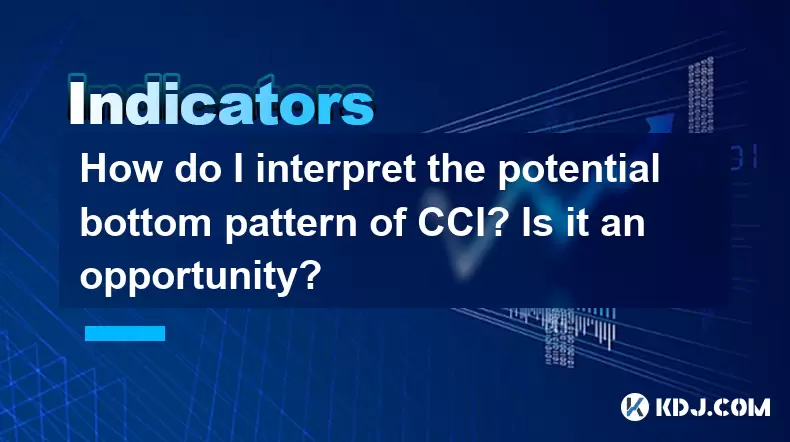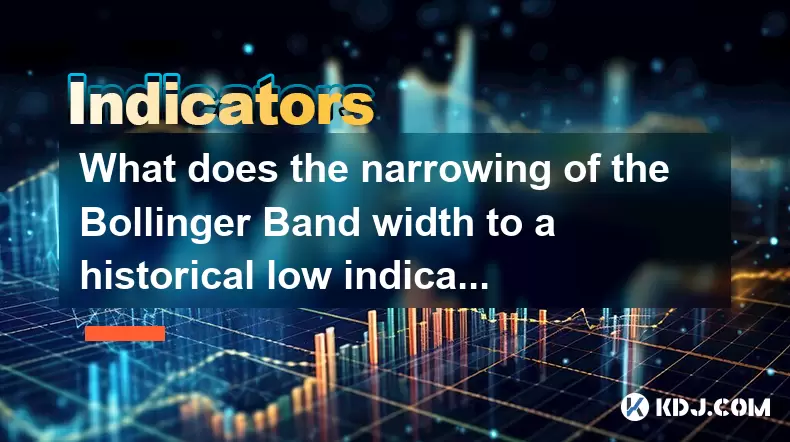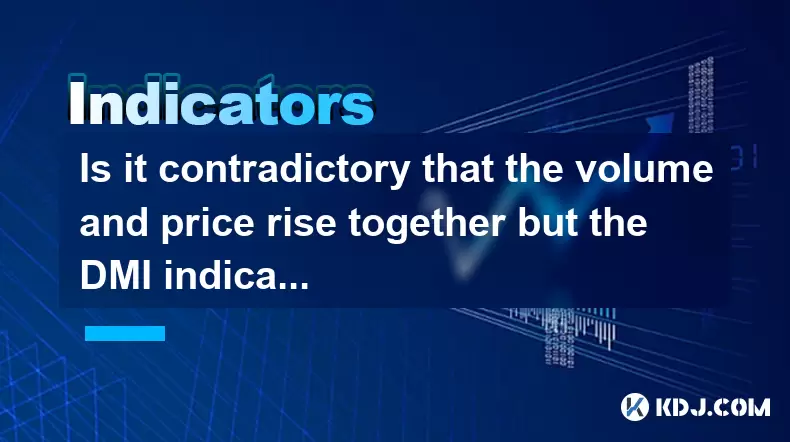-
 Bitcoin
Bitcoin $101,898.5005
-0.75% -
 Ethereum
Ethereum $2,258.1125
-1.07% -
 Tether USDt
Tether USDt $1.0004
0.01% -
 XRP
XRP $2.0178
-2.93% -
 BNB
BNB $624.0243
-1.53% -
 Solana
Solana $134.3298
-0.90% -
 USDC
USDC $0.9999
0.01% -
 TRON
TRON $0.2675
-2.05% -
 Dogecoin
Dogecoin $0.1538
-1.96% -
 Cardano
Cardano $0.5482
-1.11% -
 Hyperliquid
Hyperliquid $35.5636
5.45% -
 Bitcoin Cash
Bitcoin Cash $453.4902
-1.66% -
 Sui
Sui $2.5134
-2.97% -
 UNUS SED LEO
UNUS SED LEO $9.1292
1.77% -
 Chainlink
Chainlink $11.8457
-1.60% -
 Stellar
Stellar $0.2312
-2.73% -
 Avalanche
Avalanche $16.9721
0.29% -
 Toncoin
Toncoin $2.7549
-3.82% -
 Shiba Inu
Shiba Inu $0.0...01081
-1.10% -
 Litecoin
Litecoin $80.8250
-0.71% -
 Hedera
Hedera $0.1374
0.21% -
 Monero
Monero $305.4827
-2.36% -
 Ethena USDe
Ethena USDe $1.0006
0.00% -
 Dai
Dai $1.0000
-0.01% -
 Polkadot
Polkadot $3.2085
-3.12% -
 Bitget Token
Bitget Token $4.0845
-3.13% -
 Uniswap
Uniswap $6.3353
-1.63% -
 Pi
Pi $0.5085
-0.70% -
 Pepe
Pepe $0.0...08913
-3.82% -
 Aave
Aave $232.7090
-0.58%
How do I interpret the potential bottom pattern of CCI? Is it an opportunity?
The CCI bottom pattern, identified when the indicator rises above -100 after dropping below it, signals potential uptrends in cryptocurrency trading.
May 23, 2025 at 01:49 am

Understanding the potential bottom pattern of the Commodity Channel Index (CCI) is crucial for traders looking to capitalize on opportunities in the cryptocurrency market. The CCI is a versatile indicator used to identify cyclical trends in price movements, and recognizing a bottom pattern can signal a potential reversal from a downtrend to an uptrend. This article will delve into the intricacies of interpreting the CCI's bottom pattern and discuss whether it represents a viable trading opportunity.
What is the Commodity Channel Index (CCI)?
The Commodity Channel Index (CCI) is a momentum-based technical indicator developed by Donald Lambert. It is designed to measure the variation of a security's price from its statistical mean. The CCI oscillates above and below zero, and its values typically range between -100 and +100. Values above +100 suggest that the price is well above the average, indicating overbought conditions, while values below -100 suggest the price is well below the average, indicating oversold conditions.
Identifying a Bottom Pattern with CCI
A bottom pattern in the CCI occurs when the indicator falls below -100 and then starts to rise back above this threshold. This movement can indicate that the selling pressure is diminishing and that a reversal to an uptrend might be imminent. To accurately identify a bottom pattern, traders should:
- Observe the CCI dropping below -100. This indicates that the asset is in an oversold condition.
- Watch for the CCI to start rising. The indicator should begin to move upwards from below -100.
- Confirm the pattern with a crossover above -100. The CCI crossing back above -100 suggests that the downtrend may be losing momentum.
Using Additional Indicators to Confirm the Bottom Pattern
While the CCI can provide valuable insights into potential bottoms, it is often beneficial to use other technical indicators to confirm the pattern. Some commonly used indicators include:
- Moving Averages: A bullish crossover of a short-term moving average over a long-term moving average can reinforce the bottom pattern identified by the CCI.
- Relative Strength Index (RSI): If the RSI also indicates oversold conditions and starts to rise, it can add confidence to the CCI's bottom signal.
- Volume: An increase in trading volume as the CCI moves above -100 can indicate stronger buying interest and support the potential for a trend reversal.
Is a CCI Bottom Pattern a Trading Opportunity?
Identifying a bottom pattern in the CCI can indeed represent a trading opportunity, but it is important to approach such signals with caution and thorough analysis. Here are some considerations to keep in mind:
- Risk Management: Always use appropriate risk management techniques, such as setting stop-loss orders, to protect your investment.
- Market Context: Consider the broader market conditions and sentiment. A bottom pattern in the CCI may not lead to a reversal if the overall market is still bearish.
- Confirmation: As mentioned earlier, use other indicators to confirm the CCI's signal. A single indicator should not be the sole basis for a trading decision.
How to Trade Based on a CCI Bottom Pattern
To effectively trade based on a CCI bottom pattern, follow these steps:
- Monitor the CCI: Keep an eye on the CCI for your chosen cryptocurrency. Use a charting platform that allows you to overlay the CCI on price charts.
- Identify the Bottom Pattern: Look for the CCI to drop below -100 and then start to rise. Confirm the pattern when the CCI crosses back above -100.
- Confirm with Other Indicators: Use additional indicators like moving averages, RSI, and volume to validate the bottom pattern.
- Enter the Trade: Once the bottom pattern is confirmed, consider entering a long position. Place your entry order just above the recent high to ensure the uptrend is confirmed.
- Set Stop-Loss and Take-Profit Levels: Set a stop-loss order below the recent low to manage risk. Determine your take-profit level based on your risk-reward ratio and market analysis.
Real-World Example of a CCI Bottom Pattern
To illustrate the concept, let's consider a hypothetical example involving Bitcoin (BTC). Suppose the price of BTC has been in a downtrend, and the CCI has dropped below -100. As the price starts to stabilize, the CCI begins to rise and eventually crosses back above -100. At this point, a trader might:
- Confirm the pattern by checking the RSI, which also indicates an oversold condition and is starting to rise.
- Check the volume to ensure there is increased buying interest as the CCI moves above -100.
- Enter a long position on BTC just above the recent high to confirm the uptrend.
- Set a stop-loss below the recent low to manage risk.
- Monitor the trade and adjust the take-profit level based on the evolving market conditions.
Frequently Asked Questions
Q: Can the CCI bottom pattern be used for short-term trading?
A: Yes, the CCI bottom pattern can be used for short-term trading, but it is essential to combine it with other indicators and consider the overall market context. Short-term traders should also be prepared for more frequent and smaller price movements.
Q: How reliable is the CCI bottom pattern in predicting a trend reversal?
A: The reliability of the CCI bottom pattern can vary depending on market conditions and the asset being traded. While it can be a strong indicator of potential reversals, it should always be used in conjunction with other technical analysis tools to increase its effectiveness.
Q: Should I use the CCI bottom pattern for all cryptocurrencies?
A: The CCI bottom pattern can be applied to any cryptocurrency, but its effectiveness may vary. Highly volatile cryptocurrencies might produce more false signals, so it's important to adjust your strategy and risk management accordingly.
Q: How often should I check the CCI for bottom patterns?
A: The frequency of checking the CCI for bottom patterns depends on your trading style. Day traders might check it multiple times a day, while swing traders might check it daily or weekly. Always align your monitoring frequency with your trading goals and time horizon.
Disclaimer:info@kdj.com
The information provided is not trading advice. kdj.com does not assume any responsibility for any investments made based on the information provided in this article. Cryptocurrencies are highly volatile and it is highly recommended that you invest with caution after thorough research!
If you believe that the content used on this website infringes your copyright, please contact us immediately (info@kdj.com) and we will delete it promptly.
- VanEck, Pudgy Penguins, and Nasdaq: A New York Minute on Crypto's Big Moves
- 2025-06-24 01:05:12
- Ripplecoin Cloud Mining: Earn Daily Crypto Rewards?
- 2025-06-24 00:25:13
- SEI Price Prediction: Crypto Analyst Sees Potential Jump to $0.30!
- 2025-06-24 01:05:12
- Dogecoin, Cardano, and Crypto Security: Navigating the Wild West
- 2025-06-24 00:45:12
- Dogecoin Price Analysis and Ozak AI: Riding the Crypto Wave in Style
- 2025-06-24 00:45:12
- Neo Pepe Presale: The Next Big Meme Coin?
- 2025-06-24 00:32:08
Related knowledge

How to interpret that the time-sharing chart shows "volume and price rise together" but the MACD red column shortens?
Jun 24,2025 at 01:08am
Understanding the Concept of 'Volume and Price Rise Together'In cryptocurrency trading, when a time-sharing chart shows that both volume and price rise together, it is typically interpreted as a sign of strong buying pressure. This means more traders are entering long positions, pushing the price higher while increasing the trading volume. This phenomen...

Is it contradictory that the moving average system is arranged in a bullish pattern but the DMI shows a decline in trend strength?
Jun 23,2025 at 11:43pm
Understanding the Moving Average and DMI RelationshipIn cryptocurrency trading, technical analysis plays a crucial role in identifying potential trends and making informed decisions. Two of the most commonly used indicators are the Moving Average (MA) and the Directional Movement Index (DMI). While both tools aim to provide insight into market direction...

How to interpret that the Williams indicator quickly turns back in the overbought area but does not fall below the 50-axis?
Jun 24,2025 at 02:01am
Understanding the Williams %R Indicator in Cryptocurrency TradingThe Williams %R indicator, often referred to as Williams Percent Range, is a momentum oscillator used by traders to identify overbought or oversold conditions in financial markets, including cryptocurrency. It ranges from 0 to -100, where values above -20 are considered overbought and thos...

What is the significance of the gap formed by the gap opening not being filled within five days?
Jun 23,2025 at 09:42pm
Understanding Gaps in Cryptocurrency TradingIn the world of cryptocurrency trading, a gap refers to a situation where the price of an asset jumps from one level to another without any trading activity occurring between those two levels. This often happens over weekends or holidays when the market is closed, and significant news or events occur that impa...

What does the narrowing of the Bollinger Band width to a historical low indicate?
Jun 24,2025 at 02:35am
Understanding Bollinger Bands and Their Role in Technical AnalysisBollinger Bands, developed by John Bollinger in the 1980s, are a popular technical analysis tool used to measure market volatility. They consist of three lines: a simple moving average (SMA) in the center, typically over a 20-period setting, and two outer bands that are set at a standard ...

Is it contradictory that the volume and price rise together but the DMI indicator shows that the trend strength decreases?
Jun 24,2025 at 01:00am
Understanding the Relationship Between Volume, Price, and DMIIn the world of cryptocurrency trading, it is common for traders to analyze multiple indicators simultaneously to form a comprehensive view of market conditions. Volume and price are two of the most basic and widely used metrics in technical analysis. When both volume and price rise together, ...

How to interpret that the time-sharing chart shows "volume and price rise together" but the MACD red column shortens?
Jun 24,2025 at 01:08am
Understanding the Concept of 'Volume and Price Rise Together'In cryptocurrency trading, when a time-sharing chart shows that both volume and price rise together, it is typically interpreted as a sign of strong buying pressure. This means more traders are entering long positions, pushing the price higher while increasing the trading volume. This phenomen...

Is it contradictory that the moving average system is arranged in a bullish pattern but the DMI shows a decline in trend strength?
Jun 23,2025 at 11:43pm
Understanding the Moving Average and DMI RelationshipIn cryptocurrency trading, technical analysis plays a crucial role in identifying potential trends and making informed decisions. Two of the most commonly used indicators are the Moving Average (MA) and the Directional Movement Index (DMI). While both tools aim to provide insight into market direction...

How to interpret that the Williams indicator quickly turns back in the overbought area but does not fall below the 50-axis?
Jun 24,2025 at 02:01am
Understanding the Williams %R Indicator in Cryptocurrency TradingThe Williams %R indicator, often referred to as Williams Percent Range, is a momentum oscillator used by traders to identify overbought or oversold conditions in financial markets, including cryptocurrency. It ranges from 0 to -100, where values above -20 are considered overbought and thos...

What is the significance of the gap formed by the gap opening not being filled within five days?
Jun 23,2025 at 09:42pm
Understanding Gaps in Cryptocurrency TradingIn the world of cryptocurrency trading, a gap refers to a situation where the price of an asset jumps from one level to another without any trading activity occurring between those two levels. This often happens over weekends or holidays when the market is closed, and significant news or events occur that impa...

What does the narrowing of the Bollinger Band width to a historical low indicate?
Jun 24,2025 at 02:35am
Understanding Bollinger Bands and Their Role in Technical AnalysisBollinger Bands, developed by John Bollinger in the 1980s, are a popular technical analysis tool used to measure market volatility. They consist of three lines: a simple moving average (SMA) in the center, typically over a 20-period setting, and two outer bands that are set at a standard ...

Is it contradictory that the volume and price rise together but the DMI indicator shows that the trend strength decreases?
Jun 24,2025 at 01:00am
Understanding the Relationship Between Volume, Price, and DMIIn the world of cryptocurrency trading, it is common for traders to analyze multiple indicators simultaneously to form a comprehensive view of market conditions. Volume and price are two of the most basic and widely used metrics in technical analysis. When both volume and price rise together, ...
See all articles
























































































